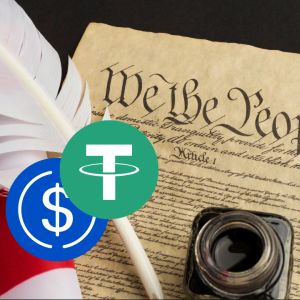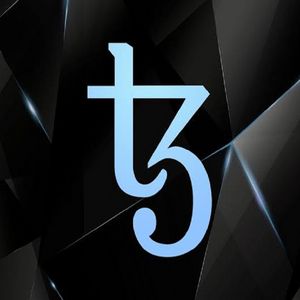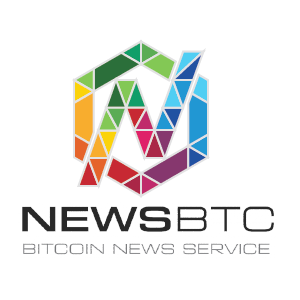According to Grand View Research, a research and consulting company, the global blockchain technology market size was estimated at $31.28 billion in 2024 and is projected to grow at a CAGR of 90.1% from 2025 to 2030. Blockchain technology has captured the imagination and attention of stakeholders and enthusiasts in the finance industry including other industries too. It hasn’t been a seamless journey though. Blockchain’s architecture has evolved over time from simple transaction layers to complex specialized ecosystems. Layer-1 blockchain networks like Bitcoin and Ethereum are the foundation on which layer-2 and layer-3 solutions have been built to tackle challenges in scalability, interoperability, infrastructure development, and gaming integration. These innovations are reshaping the blockchain scene, which in turn is reshaping many industries today. In this piece, will explore the blockchain infrastructure and some projects leading this transformation, such as, New Wave of Layer-1 Solutions Layer-1 blockchains are fundamental to the architecture of decentralized cryptocurrency networks. These blockchains are the base on which all other blockchain applications and inventions are built. Ethereum and Bitcoin were among the first layer-1s to be built. However, we quickly realized they lacked the efficiency needed for the industry to scale. They suffered a host of challenges, network congestion, and the high cost of transactions the most notable. Bitcoin for instance has an average fee per transaction of $116.69/tx at the time of writing. Ethereum, the go-to network for building smart contracts struggled a lot as developers thronged to it as its demand increased. Modern Layer-1 protocols are addressing these challenges. They are redefining the blockchain’s performance by addressing scalability, cost, and speed through architectural upgrades and consensus mechanisms. Bottlenecks like low throughput and sub-second finality inherent in Bitcoin and Ethereum are being resolved through innovative solutions like object-centric models, Proof-of-History, etc. There are also advancements in smart contract execution that have seen the reduction of latency and fees, which has enabled real-world use cases in sectors like gaming and decentralized finance (DeFi). Sui and Aptos are examples of these layer-1 blockchains that are great with blockchain scalability. Sui is a layer-1 blockchain that is optimized for low-latency blockchain transfers. It focuses on instant transaction finality and high-speed transaction throughput making it a suitable platform for on-chain use cases like games, finance, and other real-time applications. Smart contracts in Sui are written in Move, a Rust-based programming language that prioritizes fast and secure transaction executions (presenting a viable option away from Ethereum’s Solidity). Sui currently has a total value locked (TVL) of $1.505 billion. Aptos is also a layer-1 community-driven network governed by the developers building on it. The blockchain leverages the Move programming language and a parallel execution engine to improve transaction throughput significantly. Aptos processes approximately 160,000 TPS and validates them in under one second. Aptos’ TVL is currently capped at $868.8 million. Evolution of Rollup Technology Blockchain Rollups are layer-2 solutions geared at solving the scaling problem of Ethereum. Rollups process transactions off-chain before bundling, compressing, and posting them to layer 1. This ensures that the gas fee for a transaction is distributed across everyone sending transactions in the transaction rollup. Currently, the TVL in rollup solutions is $8.964 billion. Even though they are vital in the transaction chain, Rollups aren’t yet a perfect solution to the Ethereum problem as they face their challenges. Some of the issues include: The technical difficulty in implementing advanced cryptography knowledge for ZK-rollups Limitations with interoperability between different rollups Security concerns with the off-chain storage of data User experience issues due to complexities with bridging assets between layer-1 and layer-2, and navigating different security models One project doing well in tackling these issues is Altlayer. This is an open and decentralized protocol for rollups. AltLayer brings together a novel idea of Restaked rollup which takes existing rollups (spun from any rollup stack such as OP Stack, Arbitrum Orbit, ZKStack, Polygon CDK, etc.) and provides them with enhanced security, decentralization, interoperability, and crypto-economic fast finality. Next-Generation Infrastructure The importance of a robust trading infrastructure for the financial markets can not be overstated. Robust infrastructures help with efficiency, reliability, and the secure execution of trades. This is vital because it minimizes risks and ensures a quick response to market changes, encouraging trust among market participants. Ultimately, a robust infrastructure will lead to an increase in liquidity and market stability. Orderly Network is doing a great job contributing to this market infrastructure. They are a next-generation trading infrastructure for Web3 builders, a permissionless and modular protocol with deep liquidity and CLOB infrastructure. Platforms like Orderly ensure that Web3 trading systems are stable and perform excellently. Gaming and Digital Asset Innovation The gaming industry is another industry where blockchain has had a huge impact. The introduction of crypto has brought with it new revenue models and seamless microtransactions for both game developers and players. Players can also now own verifiable in-game items and other digital assets through the use of Non-Fungible Tokens (NFTs). This technology has seen the gaming industry experience a steady shift from centralized control where only the developers had all the power to a player ownership system that has enhanced player engagement and in-game economic models. According to this report, the global blockchain gaming market was valued at $128.62 billion in 2022. This is projected to grow from $154.46 billion in 2023 to $614.91 billion in 2030—a CAGR of 21.8% during the forecast period. Zentry and Altura are protocols that embody what the blockchain is doing in the gaming and NFT spaces. The Zentry blockchain is the backbone of Zentry’s unified Play Economy, connecting various games and platforms, and allowing for seamless interaction and collaboration. Zentry operates on a blockchain infrastructure that ensures security, transparency, and decentralization. Altura on the other hand is a blockchain project that enables the creation, trade, and integration of smart NFTs into games and applications. The platform aims to redefine digital ownership and asset utility in gaming by providing true ownership and transferability of digital assets. These platforms are building the future of blockchain gaming infrastructure—with improved player ownership systems and robust in-game economies where everyone is rewarded for their time and effort put into the game. Conclusion The transformation of the blockchain industry in the last decade has been remarkable. ‘Original’ layer-1s have been disrupted and redefined via inventions like the Move programming language and parallel execution by blockchains like Sui and Aptos. Altlayer’s revolutionary approach has resulted in unprecedented growth in scalability and efficiency. Robust trading infrastructure by solutions like Orderly Network has complemented this progress, while Zentry and Altura push the boundaries of what’s possible in the gaming industry. The future of the blockchain is one where sophisticated applications are supported across industries like finance and gaming while blockchain networks seamlessly handle millions of transactions. However, I think the true power of these innovations lies in their ability to create a more interconnected, accessible, and efficient blockchain ecosystem. The post Evan Luthra sheds light on the Evolution of Blockchain Architecture with New Paradigms in Scalability, Infra, and Gaming appeared first on CoinGape .


















